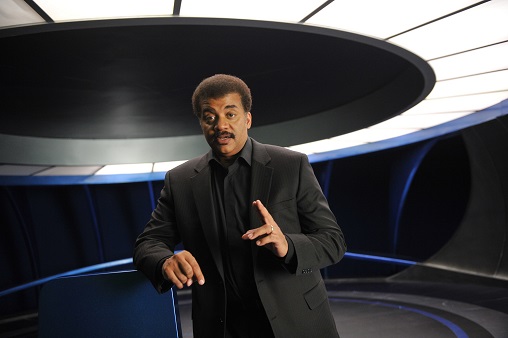In a visually thrilling showcase of the universe worthy of the highest definition television and stunning enough to captivate in a style that seems designed to be seen in a planetarium, Cosmos: A Spacetime Odyssey brings science to the public in an entertaining and easy to understand way. Cosmos is certainly not just for astrophysics geeks, covering a variety of topics ranging from larger than the known universe to smaller than a molecule of DNA. One of the first things that caught my attention about Cosmos was executive producer Seth MacFarlane, creator of Fox’s Family Guy. Cosmos is part CGI, part animation, and part camera filming.
While MacFarlane’s influence can be seen in the show’s animated portions, there is, thankfully, a lack of crude humor about sex and Hitler. Compared to the spectacular CGI, the animation falls flat and is dull for the viewer. It doesn’t help that the portions selected to utilize animation have been less exciting topics to begin with, usually centered around history and people through time.
The soothing, always relaxed voiced Neil deGrasse Tyson, proves a suitable host for Cosmos. The only flaw in his role as a science communicator being that he sometimes sounds less like he is having a conversation and more like he is rehearsing a dramatic monologue. Otherwise, Tyson does a fantastic job of presenting material, sidestepping commonly made mistakes and conveying important ideas. He makes it clear that evolution is not goal-oriented, it is not survival of the fittest, and Pluto is not a planet. One of Tyson’s early claims to fame was his leading role in the demotion of Pluto from planetary status. As director of the Hayden Planetarium at the Rose Center for Earth and Space, Tyson is fittingly a very approachable figure for showing audiences the world of science, seen in Cosmos by his speaking in the premiere about his time discovering what he wanted to do with the rest of his life and feeling like a nobody from the Bronx. It is clear that Tyson sees the message of Cosmos to be that science is for anyone and everyone.
The content in the show supports this message. It is never anything so complex that a middle school student could not follow along, but interesting enough that an adult will also find themselves listening closely. Most have learned it at some point, but Cosmos presents it in a way that does not assume the viewers remember. For example, the second episode explains how DNA is replicated and what it is used for.
The material covered in the show would be in any seventh grade science book, but showing the DNA molecule being replicated, explaining how closely related we are to other animals, and how random mutations drive evolution are just some of the ways that Cosmos brings science to life (pun intended). It is pure science, open for anyone and waiting to be explored. Cosmos gives children and adults alike the opportunity to let their imaginations run wild and see the limitless potential that is present in our world. If you have yet to see an episode, Cosmos: A Spacetime Odyssey can be seen Sundays at 9:00 p.m. on Fox and Mondays at 10:00 p.m. on the National Geographic channel.









I have seen both episodes and they are great , thought provoking, and good TV. Carl would surely be proud
I have seen both episodes and they are great , thought provoking, and good TV. Carl would surely be proud